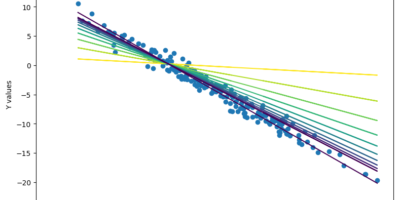Did you have fries yesterday, or poutine? Did you eat some form of the common potato, or see someone else eat it? Of course you have. If not, you wouldn’t be in Canada, where 5lb of potatoes is nearly the cheapest thing in the supermarket.
“When it comes to potatoes, Canada has a well-earned reputation as a global leader,” says Potato Canada. “With our harsh winters, temperate summers and fertile soils – it’s easy to see why Canada is a world leader”.
However, just across the Atlantic, in the Netherlands, it may come as a surprise that potatoes are not taken for granted as much as they are here. In the Netherlands, the ratio of fertile soil to sea water and dikes lowers considerably. Much of the soil is overwhelmed with salt, and farmers have found it hard to grow crops in them…that is, until recently.
On September 1, 2014, Dr Arjen Vos and farmer Marc van Rijsselberghe, won the international competition Securing Water for Food: A Grand Challenge for Development, chosen from 520 applications from over 90 countries.
Not too long ago, in July 2011, van Rijsselberghe and Vos harvested the first salt tolerant potatoes on Salt Farm Texel, a farm set up by the two, for the sole sake of growing salt-tolerant crops. Inspired by sea cabbage, a halophytic plant growing along the coasts of Europe, van Rijsselberghe was determined to yield similar results from potatoes. Using a natural, trial and error approach, aided by a local Dutch farmer with knowledge of thousands of potato varieties, and keeping from GM and laboratory settings, the two were successful in creating the World’s first salt-tolerant potatoes.
It may come as a surprise then that these halophytic potatoes are remarkably not salty. As a matter of fact, they are remarkably sweet! “If you tease a plant with salt,” said Vos, “it compensates with more sugar …. So nine times out of ten the salt is retained in the leaves of the plant.”
The potatoes are now on their way to Pakistan “where thousands of hectares of what until now had been unproductive land because of sea water encroachment have been set aside for them,” says Tracy McVeigh, reporter for the Guardian. “If the experiment works and the potatoes adapt to the Asian climate, it could transform the lives of not only small farmers in Pakistan and Bangladesh, where floods and sea water intrusion wipe out crops with increasing regularity, but also the 250 million people who live on salt-afflicted soil,” said McVeigh.
Recently, Salt Farm Texel have also begun growing halophytic strawberries.
Among this potato craze, and Canada’s seemingly endless supply of potatoes, it may come as a surprise then that the PEI Potato Board reports that “fresh potato consumption [in Canada] has tumbled about 48 per cent in the past 15 years”. PEI encompasses a quarter of Canada’s potato production, but abandoned farm buildings and “For Sale” signs can be found throughout the province. Over the past few years, industry officials estimate that 30 per cent of PEI farmers have left the profession.
According to Greg Donald of the PEI Potato board, “potatoes are misunderstood [in Canada].” Rather than an “obesity inducing carb,” Donald hopes consumers will view them as a “low-cal, gluten-free, potassium-rich, fibre-heavy vegetable.”
As Canadians, and proud supporters of Canada’s own non-halophytic potatoes, we should increase our potato consumption; perhaps one day, potatoes will become the world’s greatest food crop and it will be fortunate for us that Canada continues to be a world leader in potato production.




Leave a Reply